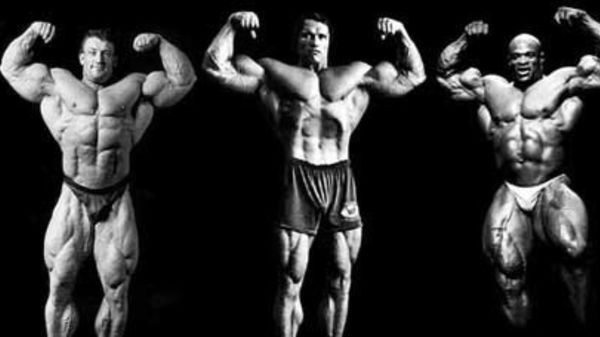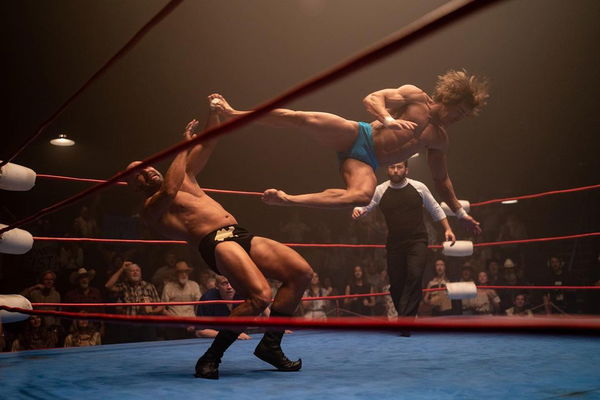“Hey Girls, Still Be Muscular”: Women Bodybuilders Were Penalized for Being ‘Too Big’ at 1992 Ms. Olympia

Follow Us

Women’s bodybuilding has had a lot of ups and down throughout the years. Fifteen years after the creation of the Mr. Olympia contest, the first Ms. Olympia contest took place. For the next decade, things worked similarly to how men’s bodybuilding works. Competitors trying to get to the Ms. Olympia stage had to win or secure positive placings in regional, national, or international contests.
However, unlike men’s bodybuilding, women’s bodybuilding didn’t see rapid growth. Trouble began in the 90s and lasted throughout the decade with controversial decisions, rule changes, and more. The IFBB imposed the ‘femininity rules’ in 1992, and it became the cause for controversy.
ADVERTISEMENT
Article continues below this ad
A controversial set of rules
In 1992, the IFBB changed things up and gave judges a set of femininity rules. They instructed the judges to mark down the bodybuilders carrying more muscle than most competitors. However, the IFBB probably didn’t think it would become the topic of heated debates among fans, experts, and competitors.
Trending

Fans Believe Kendall Jenner’s Lookalike Bodybuilder Is the “Most Amazing Woman on Earth”
April 27, 2024 01:45 PM EDT

Bodybuilding Hero Who Was Rushed for Emergency Heart Surgery a Year Ago Drops a Happy Update: “Feel Like I Can Live and Breathe Again”
January 11, 2024 04:59 AM EST

Top 5 Biggest Bodybuilders of All Time
April 28, 2024 12:01 AM EDT

Bodybuilder vs. UFC Fighter: Does Bradley Martyn Stand a Chance Against Nate Diaz? Bodybuilder With PhD Analyses
April 26, 2024 02:45 PM EDT

“Steroids Did a Number on His Face”: Zac Efron Faces Fierce Scrutiny From Fitness World Over His Insanely Jacked Wrestler Avatar
November 21, 2023 06:01 AM EST
Get instantly notified of the hottest Bodybuilding stories via Google! Click on Follow Us and Tap the Blue Star.

Follow Us
View this post on Instagram
“If all the girls on stage are really muscular, the judges only have that to choose from,” said Cory Everson, who had won the contest six times. During the ESPN broadcast of the 1992 Ms. Olympia, she said, “So I think what’s happening is they’re trying to say ‘Hey girls […] still be muscular, but really focus on symmetry in proportion.’”. However, that didn’t help cool the debate.
1992 он Ms.Olympia pic.twitter.com/wZYz6xP9MR
— Ironman Fitness Club (@IronmanFitnessC) January 20, 2015
At the same time, male bodybuilders were pushing the limits of muscle mass. Dorian Yates had already kicked off the ‘mass monster’ era. Every year, Yates and other top male bodybuilders appeared on the bodybuilding stage, weighing more and carrying more muscle. However, the femininity rules were a decree that penalized women bodybuilders who tried to do the same.
Fans expect their bodybuilders to constantly improve. However, many fans believed, due to the enactment of the new rules, reigning champion Lenda Murray won the show without making any significant changes. After unfavorable reactions, the IFBB gradually phased out the new rules.
The winds of change in women’s bodybuilding
The writing had been on the wall since 1991. Many fans thought the femininity rules were a formal enactment of the judging style that saw Bev Francis lose the 1991 Ms. Olympia contest. In 1991, Bev brought exceptional muscularity in addition to proportions and posing. The fans loved Bev, and she was ahead on the judges’ scorecard.
Bev Francis – A Balanced Approach For Dynamite Delts (1991) https://t.co/vaaoXbFzj7 pic.twitter.com/ezcWQR3JcL
— Conor Heffernan (@PhysCstudy) December 24, 2018
ADVERTISEMENT
Article continues below this ad
However, after the posing round, Murray edged out Francis with just a one-point lead. While Murray had a balanced and proportional physique, Bev was more muscular.
Watch this story – 8x Mr. Olympia Ronnie Coleman Named His Female Counterpart in the Bodybuilding World
ADVERTISEMENT
Article continues below this ad
While they later scrapped the 1992 rule changes, the efforts to control the muscle mass of female bodybuilders have remained to this day.
What are your thoughts on the controversial rule?
Edited by:
Tony Thomas

